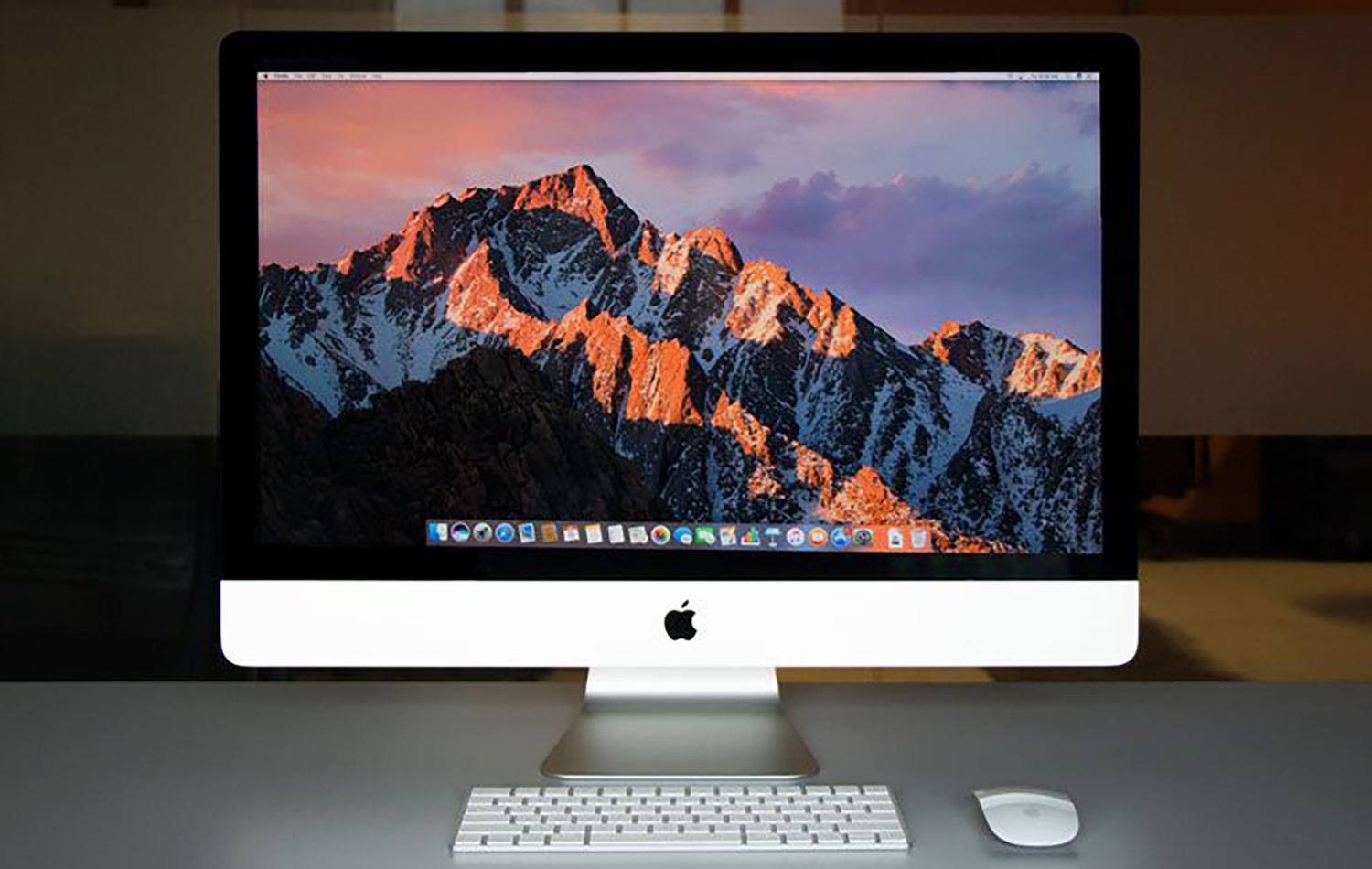Tom's Guide Verdict
The Apple 27-inch iMac with 5K Retina display is a must for photo and video editors, thanks to its stunning display and potent performance, but it's also a great choice for anyone who wants a capable desktop.
Pros
- +
Speedy performance
- +
Plenty of graphics muscle
- +
Brilliant display
- +
Familiar iMac design
Cons
- -
No touch option
- -
Awkward port placement
- -
Magic Mouse is inoperable when charging
- -
No height adjustment
Why you can trust Tom's Guide
The iMac has been a key part of Apple's computer family for years, and with good reason. The premium all-in-one has redefined the desktop PC several times over the years and offers a blend of performance and visual capability that is undeniably impressive. The iMac helped kick off today's all-in-one category, and it's still one of the best all-in-one desktops around.
After a couple of years with only mediocre updates, the 2017 update to the 27-inch iMac with 5K Retina display (from $1,799; $2,899 as tested) moves the Mac family forward with smart improvements, including a brighter display, versatile Thunderbolt 3 ports, and updated processing and graphics performance that blows past the competition. It's an improvement in every way that matters, and one of the best all-in-one computers we've reviewed.
Design
The iMac design has stayed relatively unchanged since the slim version was introduced back in 2012. With the 2017 update, you get the familiar minimalist design, with a 27-inch display surrounded by black bezels and covered in edge-to-edge glass. Below the display is the bare-metal chin bearing the Apple logo, and a sturdy L-shaped stand raises the whole thing a few inches off of the desk. The hinged stand gives you a reasonable amount of tilt adjustment, but there's still no good way to adjust the height, other than stacking the iMac on some books.
The iMac measures 20.3 x 25.6 x 8 inches and weighs 20.8 pounds, which is quite reasonable for an all-in-one desktop. In comparison, the Asus Zen AiO Pro Z240IE is 23 x 17.1 x 7.5 inches and 16 pounds, and the Dell XPS 27 is 24.6 x 17 x 3.16 inches and 38.2 pounds.
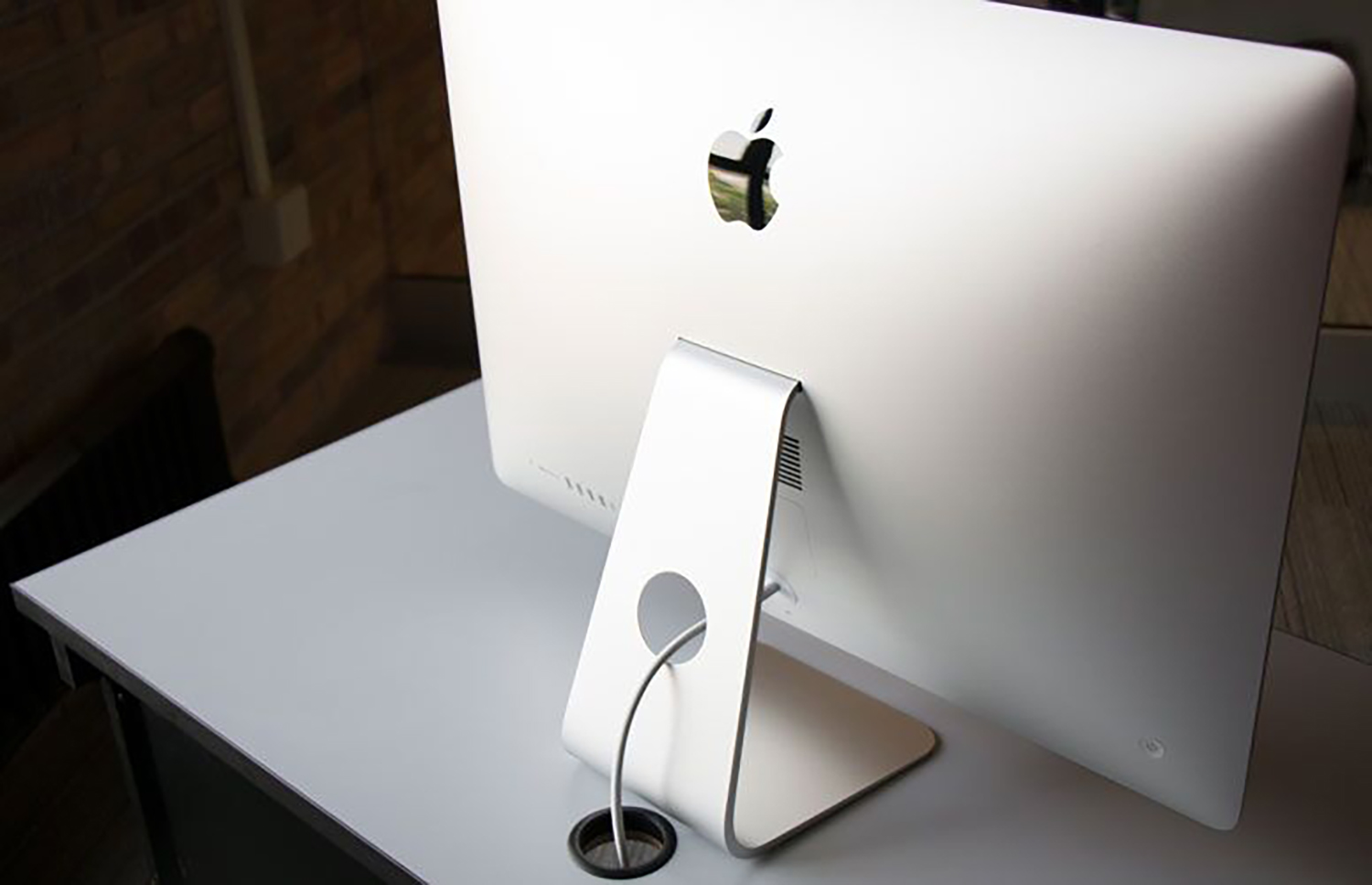
On the back, the iMac has a gently curved chassis, with airflow vents and an internal access panel hidden behind the stand. On the left side of the machine, toward the lower-left corner, is a power button, and on the lower right is the iMac's collection of ports and connectors.
Ports
While the rear-mounted position of the ports is nothing new, it still feels mildly irritating that you have to fumble blindly behind the machine just to plug in a flash drive. Still, the selection is plentiful: an audio jack, an SDXC card slot, four USB 3.0 ports, two Thunderbolt 3 ports and an Ethernet jack. Next to the power connector is a small Kensington lock slot to physically secure the device.
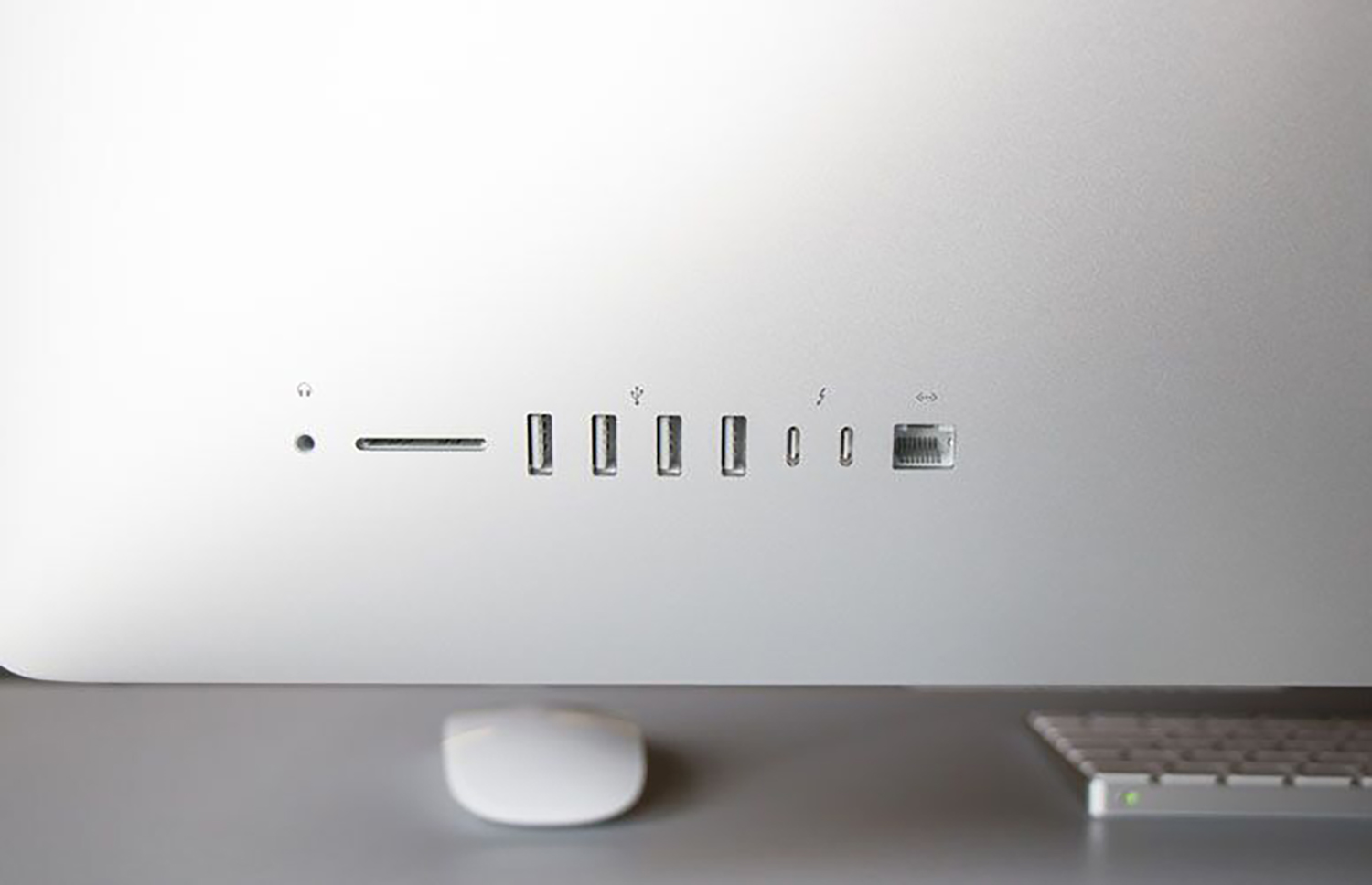
Wireless connectivity gets an iterative update to Bluetooth 4.2 wireless technology in addition to 802.11ac Wi-Fi.
One significant change, and the only visible change on the new model, is the switch from Thunderbolt 2 to Thunderbolt 3, which uses the USB Type-C standard. These ports are smaller and aren't as finicky as traditional USB ports about plugging in right side up.
The Thunderbolt 3 standard supports connections up to 40 GBps, and can be adapted out to nearly any port you want — HDMI, DisplayPort, DVI and more. Thunderbolt 3 also offers better support for external monitors, letting you connect a second 5K display or two 4K displays at 60 Hz. The connection also supports DisplayPort digital video output and can be used with a variety of high-performance storage devices.
Display
While 4K displays have grown in popularity over the past few years, almost no one has tried to match the 27-inch iMac's Retina display and its 5120 x 2880 resolution. To goose the display just a bit more, Apple dialed up the brightness and increased the number of supported colors from millions to a cool billion.
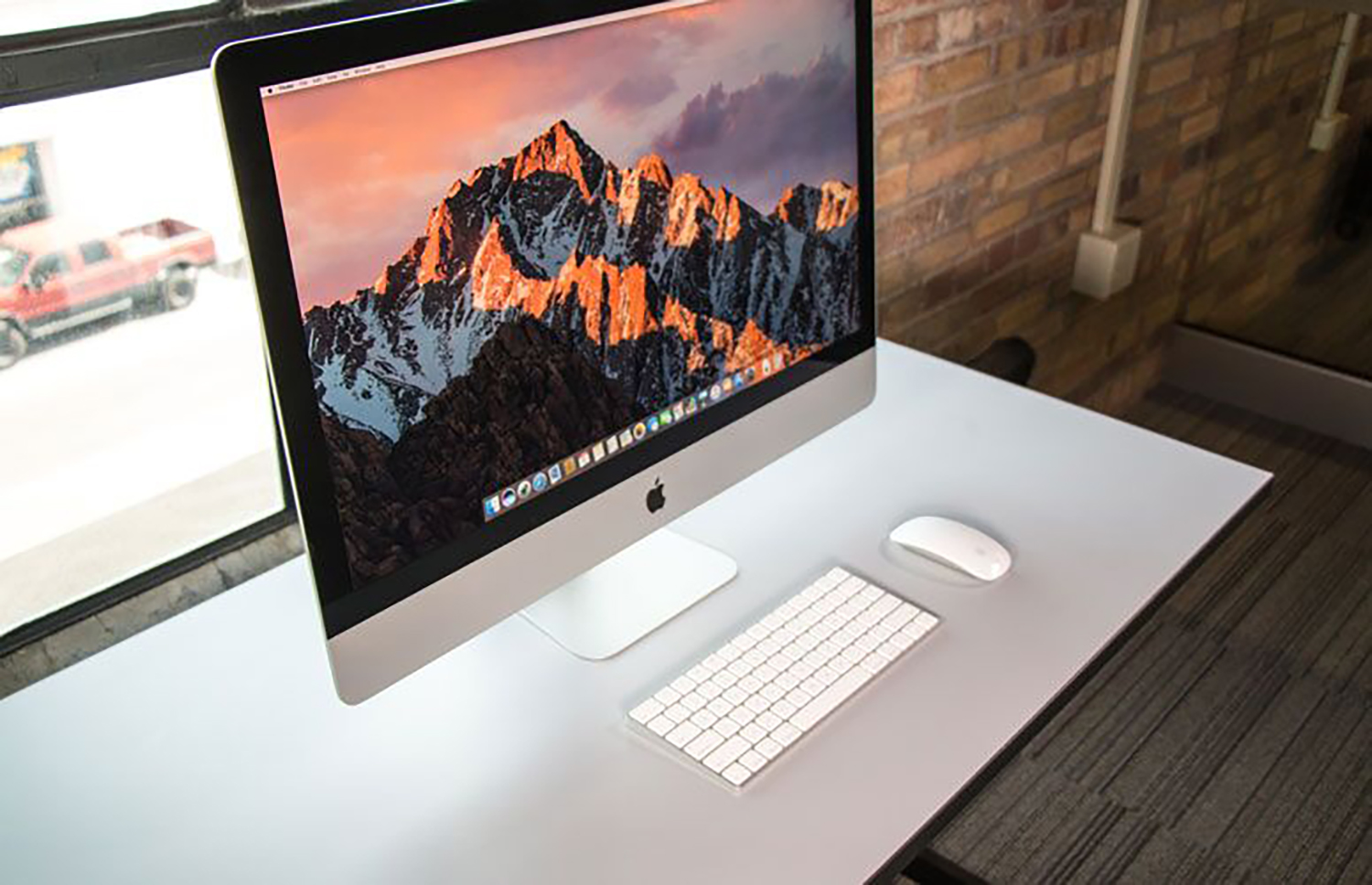
When I watched the 1080p trailer for Valerian and the City of a Thousand Planets on this panel, the alien city of Alpha popped with a rainbow of colors, and everything stayed sharp and crisp, including a pristine alien beach scene and an action scene filled with intricate mechanical details.
The 5K display makes everything look great, but the real benefit is that you can do things like edit 4K video at full resolution and still have all of your toolbars and sliders on-screen. The 27-inch monitor is large enough and sharp enough to work with documents side by side — even those with smaller text — and never worry about readability.
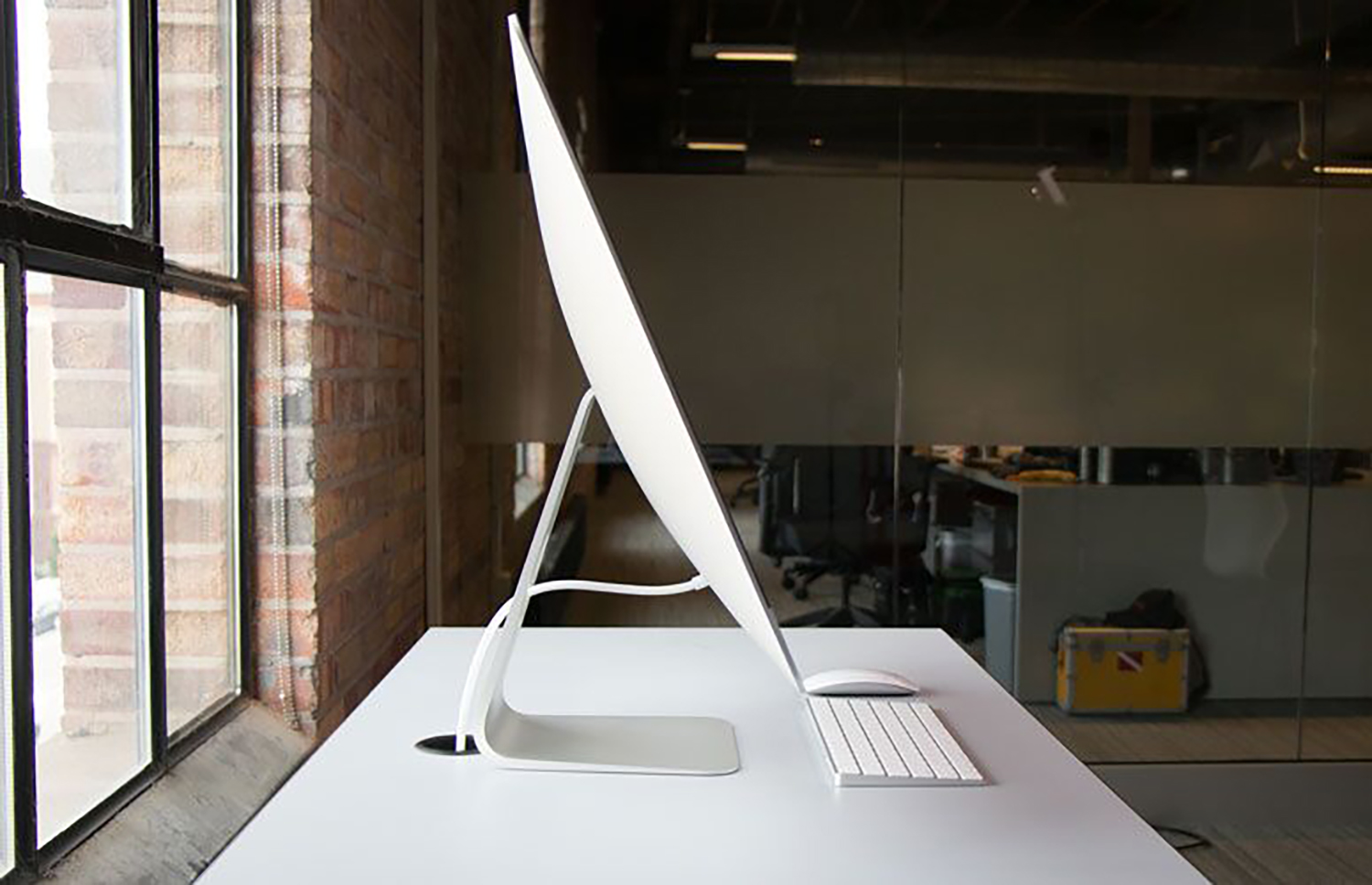
The only thing the screen lacks is touch support, which has become common on most premium Windows all-in-one systems. Touch (or the lack thereof) has been a strong point of differentiation between Apple and Windows systems in recent years, but as PCs like the Microsoft Surface Studio refine and expand upon the touch experience, the lack of touch input on the iMac will be a real sticking point for many creative professionals.
MORE: Apple Watch 3 Rumors: Release Date, New Features, Price and More
In our testing, the iMac’s display registered an average of 463 nits, and at the center of the screen we saw brightness as high as 496 nits, right in line with the 500 nits Apple claims. It easily beats the Dell XPS 27 (316 nits) and Microsoft Surface Studio (354 nits). All of these systems exceed the mainstream, where systems such as the Asus Zen AiO Pro (247 nits) and the Lenovo IdeaCentre AIO 910 (226 nits) have nowhere near the same brightness levels.
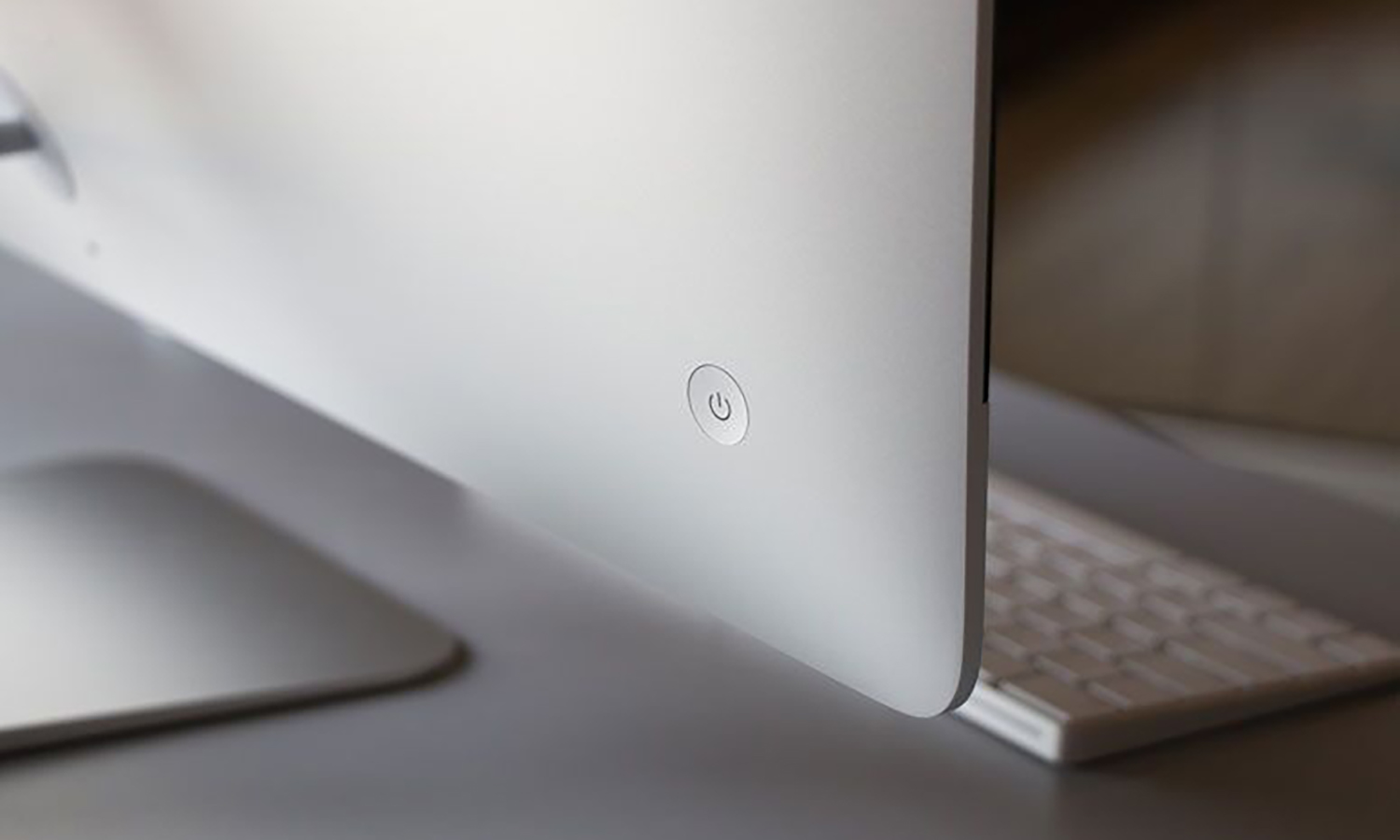
The iMac's vivid display reproduces an impressive 167 percent of the sRGB color gamut (we consider 100 percent to be excellent). That's much better than the category average (141 percent), but color gamut is one area where competitors give Apple a run for its money — both the Surface Studio (181 percent) and the Dell XPS 27 (187 percent) produce even more colors.
Apple's display is also worthy of praise for its nearly perfect color accuracy, with a Delta-E score of 0.06 (0 is ideal). That's better than even the best all-in-one displays, like the Asus Zen AiO Pro (0.28), the Microsoft Surface Studio (1.0), the Dell XPS 27 (5.06) and the Lenovo IdeaCentre AIO 910 (1.8). It's even more accurate than the previous iMac (2.2).
Mouse and Keyboard
The iMac still comes with the Magic Keyboard, the Magic Mouse 2 and a Lightning-to-USB cable to charge both. These products haven't changed. The Magic Keyboard is still slim and immaculately designed, with decent keys that allow for moderately comfortable typing. The glass-surfaced Magic Mouse 2 still feels great and offers excellent tracking and clicking that perfectly balance pressure and feedback.
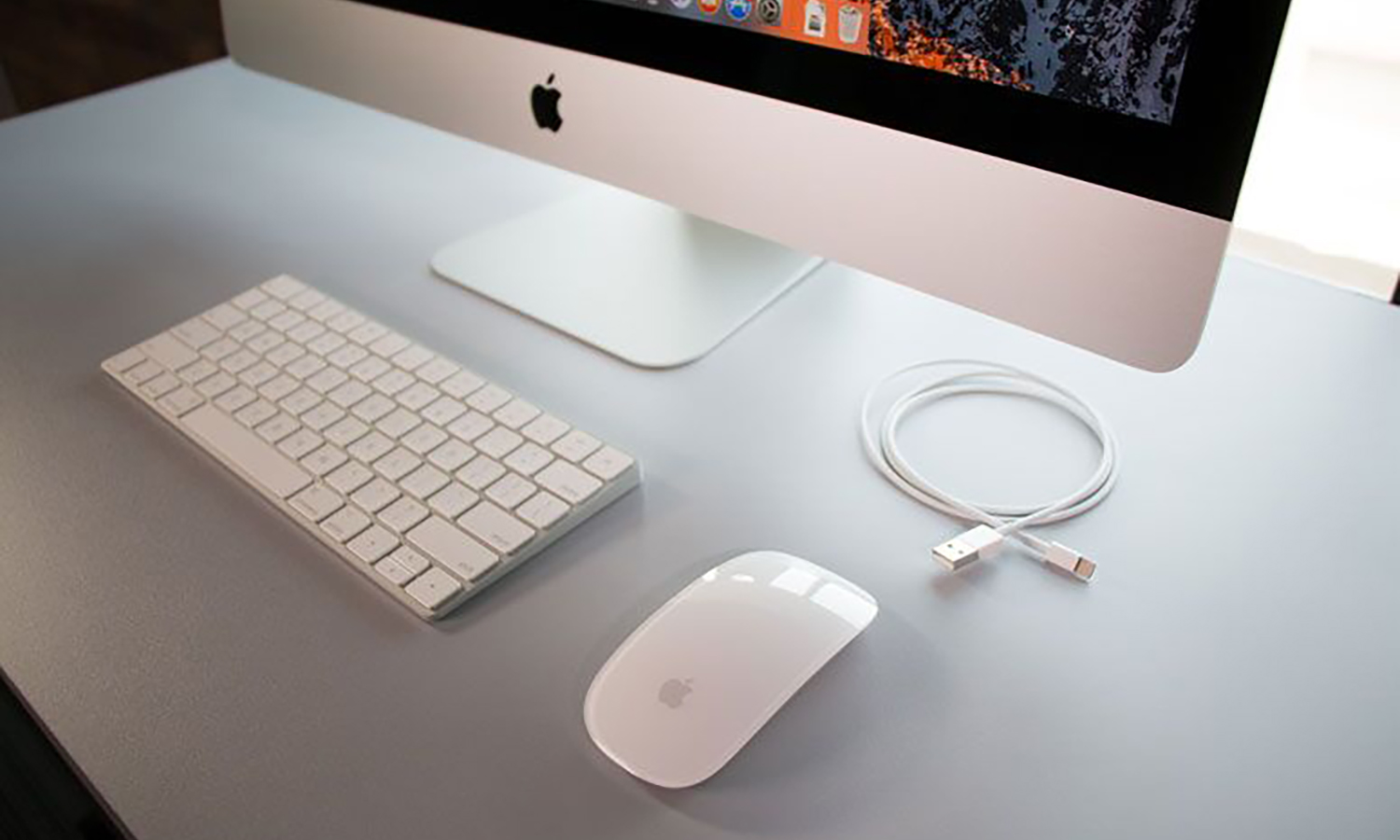
Unfortunately, to charge the Magic Mouse, you still have to plug the Lightning cable into the bottom of the mouse, which is an awkward and inelegant design choice that also renders the mouse unusable during charging. It's a small problem, but when the rest of the system is so polished and pristine, it feels like a major oversight.
Audio
Apple hasn't made any public comments about changes to the iMac's audio, but the high-quality sound likely didn't need much improvement. Bass-heavy tracks, such as Kevin MacLeod's "Fearless First," sounded rich and full. The speaker volume was great as well. When I watched the trailer for Star Wars: The Last Jedi, the iMac got loud enough to be heard outside our sound-dampened lab facility.
Performance
Our review unit boasted a Kaby Lake Intel Core i7-770K processor and 16GB of 2,400-MHz DDR4 memory. As in the past, the iMac's four SO-DIMM slots are accessible to the user, so you can upgrade the memory after purchase. Although the base model of the iMac comes with Apple's Fusion Drive, our unit was outfitted with a 512GB solid-state drive, giving it a slight boost in performance. The new components combined for an excellent multitasking experience, never missing a beat as I had 20 browser tabs open, with YouTube playing trailers and music and software downloading in the background.
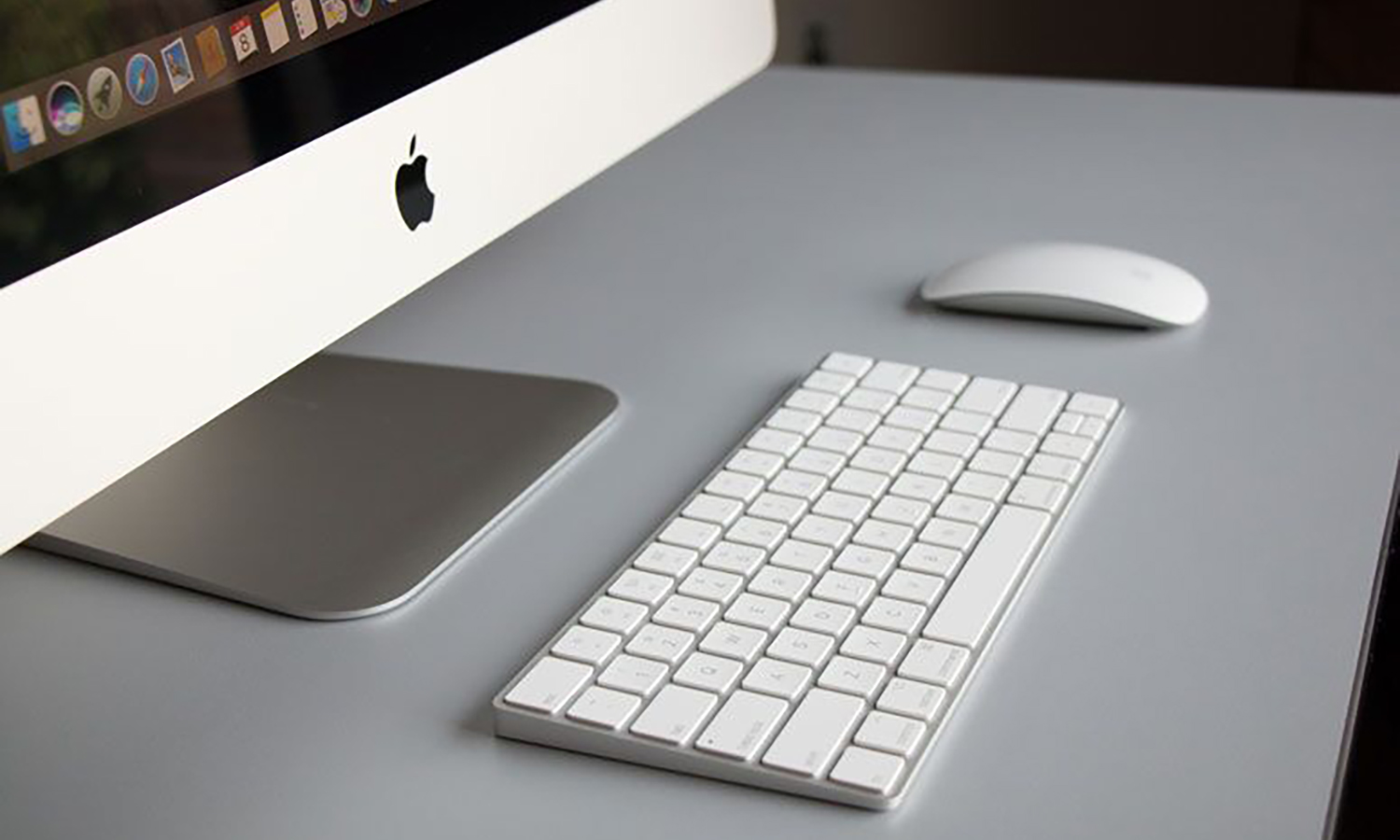
The 27-inch iMac scored 19,588 on the Geekbench 4 performance test, blazing past top performers such as the Surface Studio (13,197), the XPS 27 (14,586) and the Zen AiO Pro (11,187).
File-transfer speeds were just as stunning, thanks to the iMac's SSD storage. The iMac duplicated 4.97GB of files in just 7 seconds, for a transfer rate of 710 MBps. That's slightly behind the Surface Studio (848 MBps) but well ahead of the XPS 27 (424 MBps) and more than four times faster than the IdeaCentre AIO 910 (169.7 MBps).
The iMac also has some number-crunching muscle. It took just 1 minute and 57 seconds to match 20,000 names and addresses in OpenOffice. That's a lot faster than the 3 minutes or more posted by competing systems, like the XPS 27 (3:17), the IdeaCentre AIO 910 (3:30), the Surface Studio (3:48) and the Zen AiO Pro (3:40).
Graphics and Gaming
Another major update for the iMac is the move to an AMD Radeon Pro 580 graphics card with 8GB of VRAM. While there is no additional upgrade option, the new GPU is miles ahead of the Radeon R9 M395 offered in the previous iteration. For creative professionals who prize the visual capabilities of the iMac, the new graphics card might be reason enough to upgrade from an aging model, as it offers significantly better performance for video rendering and media work. Combine those visual upgrades with the virtual-reality support promised in the upcoming macOS update, and you have a pretty compelling reason for content producers to spring for the new system.
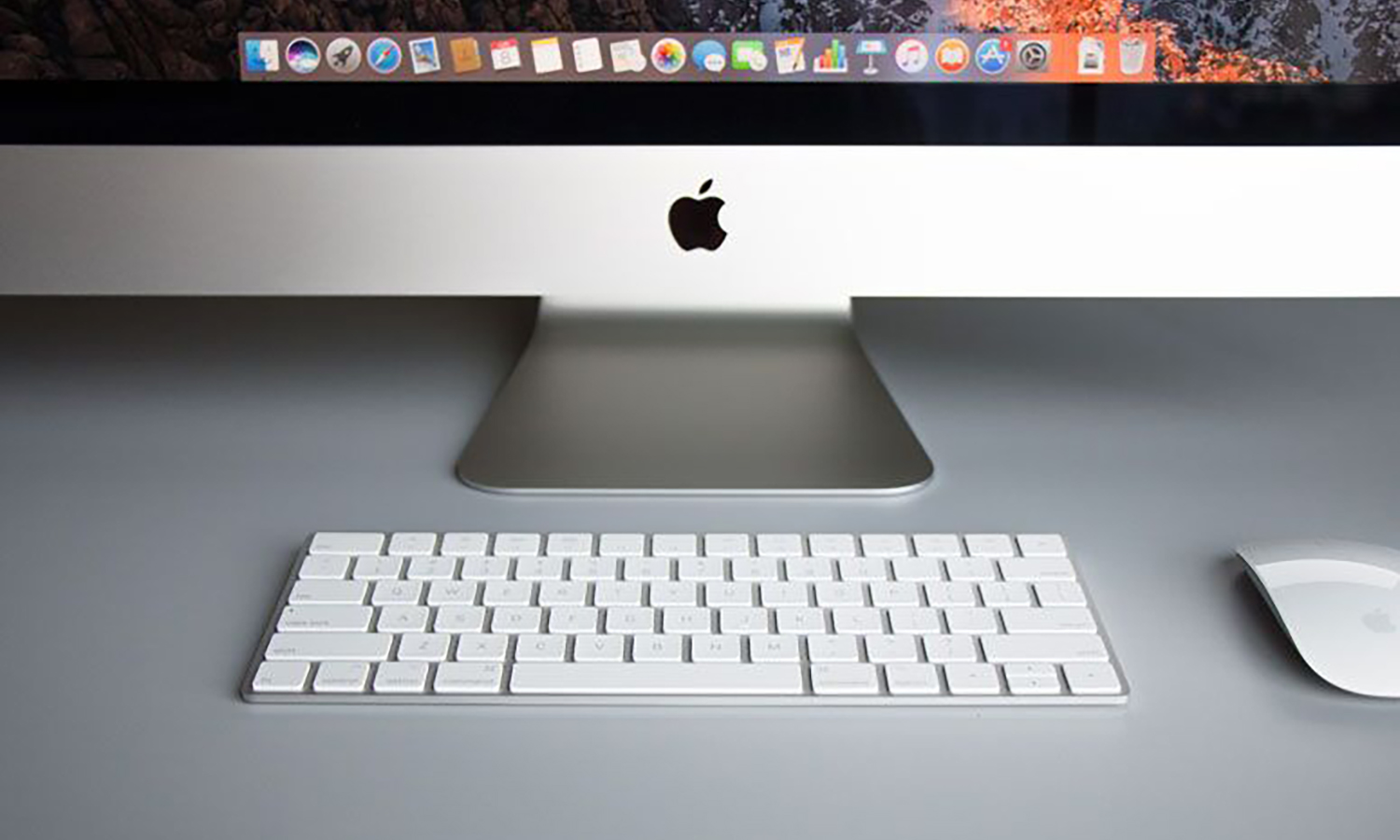
While most of our gaming benchmarks aren't available for macOS, we were able to fire up some titles for anecdotal testing. Gameplay was smooth as can be, even when turned up to a 2560 x 1440 resolution.
In Bioshock Infinite, the airborne city of Columbia was impressive, and blasting baddies with glowing vigors was colorful, chaotic fun. In Metro: Last Light Redux, the high-resolution graphics looked crisp and clear, from the texture of blood spatter on my character's hands to the crumbling architecture of the surface world.
Webcam
The iMac's FaceTime HD camera doesn't really stand out. Apple still outfitted the system with a 720p camera even when some competitors, like the Surface Studio, have a 1080p camera. The camera captured fine details, keeping each stripe on my shirt distinct. But the color on my face was inaccurate, making my face look like I had a bad sunburn.

Apple's Photo Booth and FaceTime apps are preinstalled on the iMac, so you'll be able to apply goofy filters and chat with folks on Mac and iOS devices easily.
Configurations
The base model of the 27-inch iMac starts at $1,799, and comes with a 3.4-GHz Intel Core i5 processor, 8GB of RAM, a 1TB Fusion Drive and an AMD Radeon Pro 570 graphics card with 4GB of video memory. The top preconfigured model goes for $2,299, and comes with a 3.8-GHz Intel Core i5 processor, 8GB of memory, a 2TB Fusion Drive and an AMD Radeon Pro 580 graphics card with 8GB of VRAM.
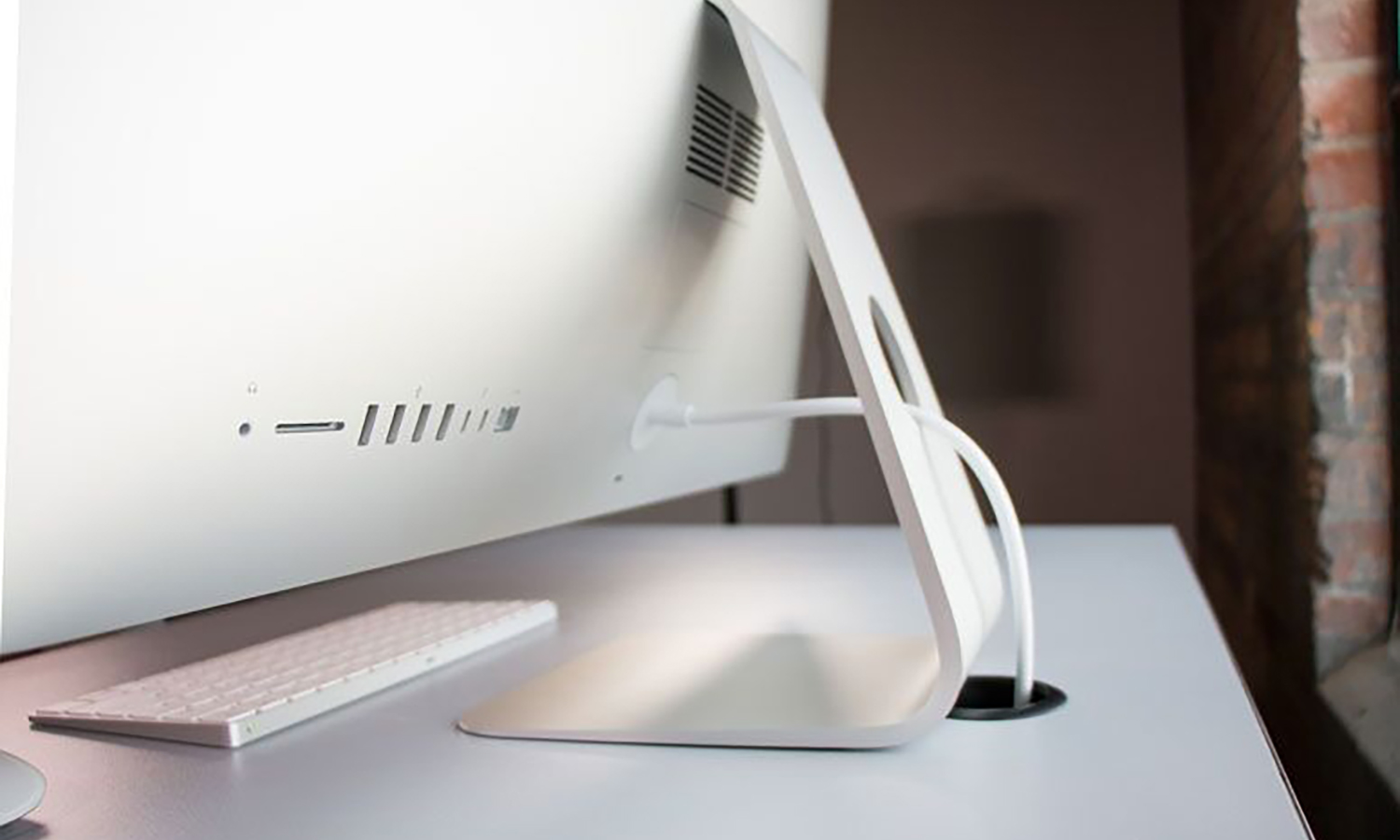
We reviewed a customized configuration, which upgrades the machine to an Intel Core i7-7700K processor with 16GB of RAM and a 512GB SSD. This upgraded model sells for $2,899, and you can go as high as $5,299 if you opt for the maximum 64GB of memory and a 2TB SSD.
Software and Warranty
The iMac currently ships with macOS Sierra, the same operating system offered across the entire range of Mac systems. Apple includes the typical selection of apps, ranging from a full office productivity suite (Pages, Numbers and Keynote) to Apple's voice assistant, Siri.

macOS High Sierra will arrive this fall. High Sierra will include some improvements — like improved privacy tools for safer browsing in Safari, VR support with Metal 2, and a few other bells and whistles — but the overall package will stay very much the same.
Apple covers the iMac with a one-year warranty and 90 days of free tech support. For an additional $169, you can add AppleCare+, which extends accident coverage to three years and adds 24-hour phone support.
Bottom Line
If you've been using an iMac for three years or more, the new 2017 model provides some compelling reasons to upgrade. The latest iMac delivers everything that was already great about past models — including a gorgeous 5K display, a sleek design and Apple's excellent macOS — along with significant improvements in processing and graphics performance and the added versatility of Thunderbolt 3.
Minor irritations include the ports' placement on the back of the iMac, the lack of height adjustment for the display and the awkward placement of the charging port on the Magic Mouse. However, those are minor details that most Mac users have long accepted. The only real sticking point is the lack of touch input. Considering that Apple's iPad brought touch computing to the mainstream, it's still puzzling that Apple doesn't have a touch-enabled option for the iMac, especially when there are several good touch-screen Windows machines. If you want similar levels of power with the option of touching or drawing on the screen, consider Microsoft's Surface Studio, which is a powerful alternative that's tailor-made for creative professionals.
However, if you're set on getting a Mac, the new 27-inch iMac is a great choice for an all-in-one machine.
Credit: Jesse Black/ Tom's Guide
Brian Westover is currently Lead Analyst, PCs and Hardware at PCMag. Until recently, however, he was Senior Editor at Tom's Guide, where he led the site's TV coverage for several years, reviewing scores of sets and writing about everything from 8K to HDR to HDMI 2.1. He also put his computing knowledge to good use by reviewing many PCs and Mac devices, and also led our router and home networking coverage. Prior to joining Tom's Guide, he wrote for TopTenReviews and PCMag.
